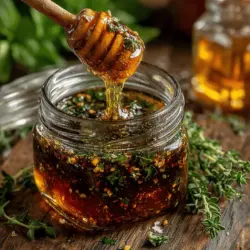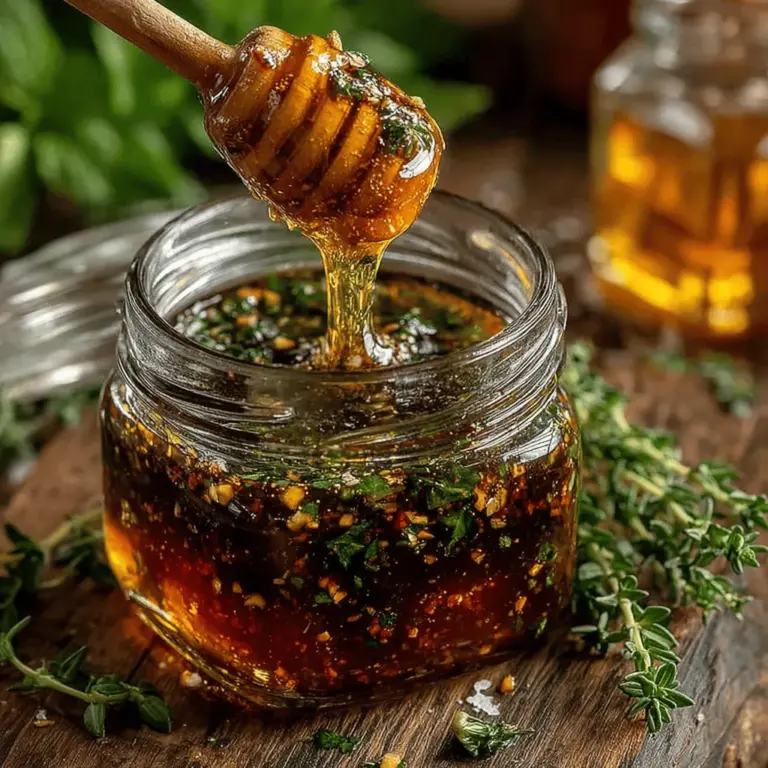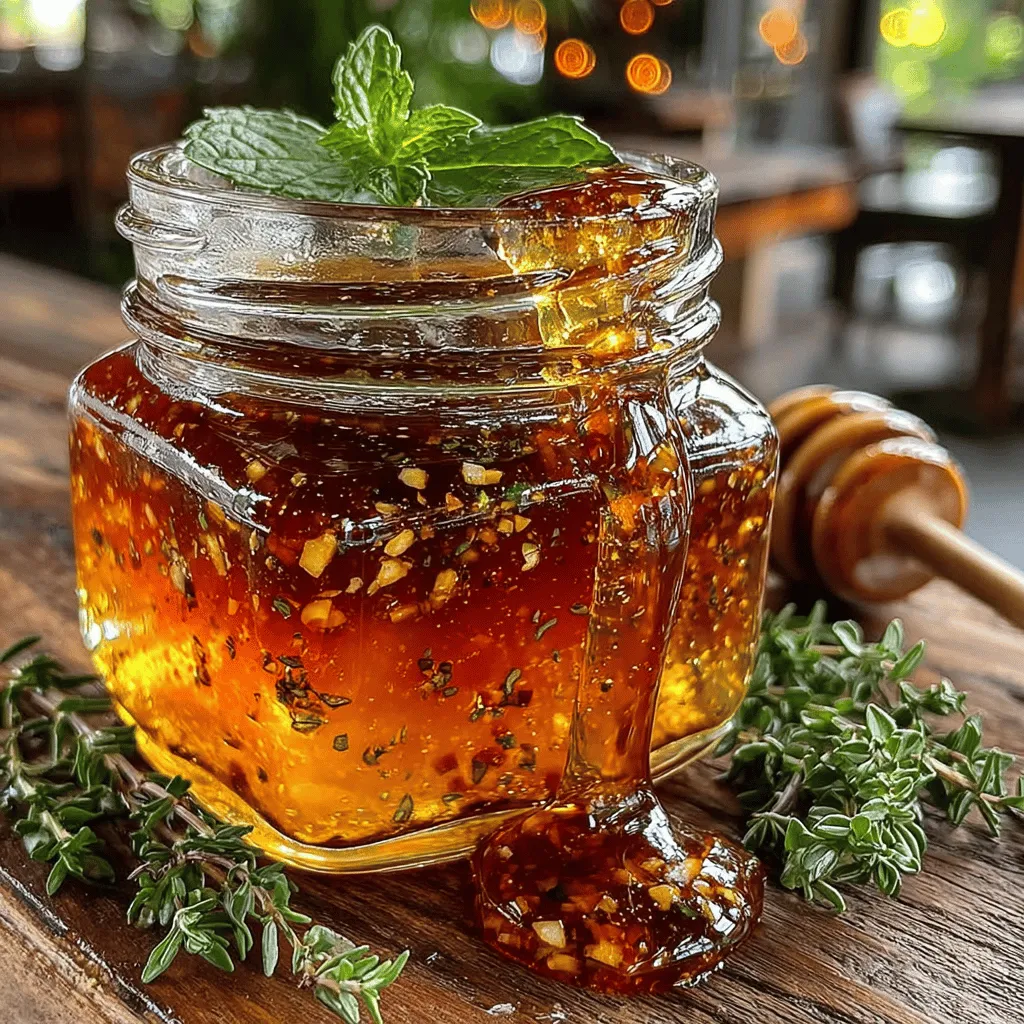Discover the Magic of Savory-Sweet Balsamic Vinaigrette: A Flavorful Addition to Your Meals
In the world of culinary delights, few things can elevate a dish quite like a homemade vinaigrette. The Savory-Sweet Balsamic Vinaigrette is a perfect example of how simple ingredients can create a complex and delightful flavor profile. With its rich, tangy taste balanced by a hint of sweetness, this versatile dressing can transform salads, roasted vegetables, marinades, and even grilled meats into extraordinary meals. This article will guide you through the process of making this tasty dressing, explore its potential uses, and highlight its nutritional benefits.
Understanding Balsamic Vinaigrette
Balsamic vinaigrette is a classic dressing that combines the acidity of balsamic vinegar with the richness of olive oil, creating a harmonious blend that enhances the flavors of various dishes. The origin of balsamic vinegar dates back to Modena, Italy, where it has been produced for centuries using a traditional method that involves aging grape must in wooden barrels. This lengthy aging process results in a complex flavor that can vary from sweet to tangy, depending on the quality and type of balsamic vinegar used.
One of the key aspects of a great balsamic vinaigrette is the quality of the ingredients. Using high-quality balsamic vinegar and extra virgin olive oil not only elevates the flavor but also ensures that you are incorporating healthy components into your meals. Balsamic vinegar is rich in antioxidants, which can help combat oxidative stress in the body, while extra virgin olive oil is known for its heart-healthy monounsaturated fats.
When it comes to health benefits, both balsamic vinegar and olive oil bring unique advantages to the table. Balsamic vinegar can help regulate blood sugar levels, support digestion, and even aid in weight management due to its low calorie count. Extra virgin olive oil is celebrated for its anti-inflammatory properties and is a staple in the Mediterranean diet, which has been linked to various health benefits, including improved heart health and longevity.
Ingredients Breakdown
To create the Savory-Sweet Balsamic Vinaigrette, you will need a few key ingredients, each contributing to the overall flavor and nutritional profile of the dressing. Let’s take a closer look at each component:
– Balsamic Vinegar: The star of the show, balsamic vinegar comes in various varieties, ranging from traditional aged balsamic to commercial-grade options. The flavor profile can differ significantly depending on the type; traditional balsamic tends to be thicker and sweeter, while cheaper versions may be more acidic. Choosing a high-quality balsamic vinegar can make all the difference in your vinaigrette.
– Extra Virgin Olive Oil: This ingredient not only serves as the base of your vinaigrette but also adds richness and depth. The quality of olive oil matters greatly, as extra virgin olive oil is less processed and retains more nutrients and antioxidants compared to regular olive oil. Look for oils that are cold-pressed and have a fruity aroma for the best flavor.
– Sweeteners: To achieve the perfect balance in your vinaigrette, you will need a sweetener. Honey and maple syrup are popular choices, each imparting its unique flavor. Honey adds a floral sweetness, while maple syrup brings a warm, earthy note. The choice between the two often depends on personal preference or dietary considerations.
– Dijon Mustard: This ingredient acts as an emulsifier, helping to bind the oil and vinegar together and creating a smooth, cohesive dressing. Beyond its functional role, Dijon mustard adds a subtle spice that enhances the overall flavor of the vinaigrette.
– Garlic: Fresh garlic is a powerhouse of flavor and nutrition. It adds a robust, savory note to the vinaigrette and offers numerous health benefits, including anti-inflammatory and immune-boosting properties. You can adjust the amount of garlic based on your taste preference, but even a small clove can make a significant impact.
– Herbs: Fresh or dried herbs can elevate your balsamic vinaigrette even further. Popular choices include basil, oregano, thyme, and parsley. Fresh herbs impart a vibrant flavor, while dried herbs can provide a more concentrated taste. Knowing when to use fresh versus dried herbs can enhance the overall profile of your vinaigrette.
Step-by-Step Guide to Making Savory-Sweet Balsamic Vinaigrette
Now that we’ve explored the ingredients, let’s dive into the process of making your Savory-Sweet Balsamic Vinaigrette. The first step is to combine your ingredients in a way that ensures a well-balanced flavor and a smooth texture. Here’s how to do it:
1. Combining Ingredients: Start by measuring out your balsamic vinegar and extra virgin olive oil in a bowl or a mason jar. A common ratio is 1 part vinegar to 3 parts oil, but you can adjust this based on your taste preference. Add the Dijon mustard, sweetener, minced garlic, and any herbs you choose to include.
2. The Sweetness Factor: Balancing the acidity of the balsamic vinegar with the sweetness of your chosen sweetener is crucial. Begin with a small amount of honey or maple syrup and taste as you go. It’s easier to add more sweetness than to take it away. Whisk or shake your mixture until the ingredients are fully combined, and the dressing has a smooth consistency.
As you prepare to finish your vinaigrette, remember that the flavors will meld and develop further after some time. Allowing the dressing to sit for at least 30 minutes can enhance its taste, giving the garlic and herbs time to infuse their flavors into the mixture.
In the next sections of this article, we will explore the various ways to use your Savory-Sweet Balsamic Vinaigrette, delve into its nutritional benefits, and share tips for storage and serving. Whether you’re drizzling it over a fresh salad, using it as a marinade for grilled chicken, or simply enjoying it as a dip for vegetables, this vinaigrette is sure to become a staple in your kitchen.
Flavor Enhancement: The Role of Mustard and Garlic
In the realm of salad dressings, the balance of flavors is crucial, and this is where mustard and garlic come into play. Mustard, whether you opt for Dijon or whole grain, acts as a natural emulsifier, helping to blend the oil and vinegar seamlessly. Its tangy depth adds a robust flavor profile that complements the sweetness of balsamic vinegar beautifully.
Garlic, on the other hand, brings an aromatic punch that enhances the overall taste of the vinaigrette. Freshly minced garlic is recommended for the most vibrant flavor, but if you are short on time, garlic powder can be a quick alternative. The key is to incorporate these ingredients thoughtfully; just a teaspoon of mustard and a clove of minced garlic can transform your vinaigrette from ordinary to extraordinary, ensuring each bite is packed with flavor.
Herbal Infusion: Incorporating Fresh and Dried Herbs
Herbs are a fantastic way to elevate your balsamic vinaigrette. Fresh herbs like basil, parsley, or chives lend a bright, aromatic quality that can make your vinaigrette feel fresh and vibrant. To use fresh herbs, finely chop about two tablespoons and stir them into the vinaigrette after preparing it. This not only enhances the flavor but also adds visual appeal.
If fresh herbs are not available, dried herbs can also work wonders. Dried oregano, thyme, or rosemary can be added to your vinaigrette for a more concentrated flavor. Start with about a teaspoon and adjust according to your taste. Remember, dried herbs are stronger than fresh, so it’s best to err on the side of caution and add more only if necessary.
The Importance of Tasting and Adjusting to Personal Preference
One of the most important steps in creating a perfect balsamic vinaigrette is tasting and adjusting the flavor to your liking. After combining the ingredients, take a moment to sample the vinaigrette. Does it have the right balance of sweetness and acidity? Is it too tangy or lacking in flavor? This is where you can make adjustments.
If you find the vinaigrette too acidic, a touch of honey or maple syrup can enhance the sweetness without overpowering the other flavors. Conversely, if it’s too sweet, adding a splash more vinegar or a pinch of salt can help bring the flavors back into harmony. Don’t be afraid to experiment a little; the best vinaigrettes are the ones that reflect your personal taste preferences.
Storage and Shelf Life
Best Practices for Storing Vinaigrette
Proper storage is key to maintaining the freshness and flavor of your balsamic vinaigrette. After preparing your vinaigrette, transfer it into a clean, airtight container. Glass jars work particularly well as they do not absorb odors or flavors. Always ensure the lid is tightly sealed to prevent any air from entering.
Understanding Flavor Development Over Time
Balsamic vinaigrette can actually improve with some time in the fridge. The flavors meld and deepen, creating a more cohesive taste. It’s recommended to allow the vinaigrette to sit for at least 30 minutes after mixing for the best flavor. However, for optimal freshness, consume your vinaigrette within one to two weeks.
Safety Tips for Refrigeration and Usage Duration
Always store your balsamic vinaigrette in the refrigerator, especially if it contains fresh ingredients like garlic or herbs. These can spoil more quickly at room temperature. If your vinaigrette separates—an entirely normal occurrence—simply give it a good shake before using. Keep an eye on the ingredients; if there’s any unusual smell or color change, it’s best to discard it.
Elevating Your Dishes with Balsamic Vinaigrette
Salad Combinations: Pairing with Various Greens and Vegetables
Balsamic vinaigrette is a versatile dressing that can be paired with a variety of salads. For a classic combination, try mixed greens, cherry tomatoes, and sliced cucumbers. The vinaigrette adds a delightful tang that balances the freshness of the vegetables.
For a heartier salad, consider combining roasted sweet potatoes, quinoa, and arugula. The vinaigrette will enhance the natural sweetness of the potatoes while adding depth to the dish. Additionally, it works beautifully with shredded cabbage in coleslaw, giving a gourmet twist to a traditional side dish.
Roasted Vegetables: How This Vinaigrette Enhances Flavor
Roasted vegetables are a fantastic canvas for balsamic vinaigrette. Drizzling the vinaigrette over a medley of seasonal vegetables such as Brussels sprouts, carrots, and bell peppers before roasting will infuse them with flavor. The sugars in the balsamic vinegar caramelize beautifully, creating a rich, savory-sweet glaze that enhances the natural sweetness of the vegetables.
To do this, toss your chopped vegetables in a few tablespoons of vinaigrette before spreading them on a baking sheet. Roast at 400°F (200°C) for about 25-30 minutes, or until they are tender and slightly charred.
Grilled Meats: The Perfect Marinade
Balsamic vinaigrette is not just for salads; it also makes an excellent marinade for grilled meats. Whether you’re using chicken, pork, or beef, the acidity of the vinaigrette helps to tenderize the meat while imparting a rich flavor.
To marinate, simply place your meat in a resealable bag with enough vinaigrette to coat it well. Let it marinate for at least 30 minutes, or overnight for a more intense flavor. Grill as usual, and enjoy the juicy, flavor-packed results.
Creative Uses Beyond Salads: Dipping Sauces and Grain Bowls
Beyond salads and marinades, balsamic vinaigrette can elevate a variety of dishes. Use it as a dipping sauce for fresh bread or as a drizzle over grain bowls filled with quinoa, roasted vegetables, and protein of your choice. Its versatile nature allows it to complement a range of flavors, making it a must-have in your culinary arsenal.
For an extra twist, try mixing it with Greek yogurt or sour cream to create a creamy dipping sauce that pairs well with vegetables or chicken tenders.
Nutritional Insights
Caloric Content and Nutritional Breakdown
When it comes to nutrition, balsamic vinaigrette is relatively low in calories, especially when compared to cream-based dressings. A typical serving (about 2 tablespoons) contains approximately 80 calories, primarily from the olive oil. The vinaigrette is also low in carbohydrates and contains no added sugars, making it a healthy choice for dressing your meals.
Health Benefits of Each Ingredient
Each ingredient in the balsamic vinaigrette contributes to its health benefits. Olive oil is rich in healthy monounsaturated fats, which are known to reduce inflammation and promote heart health. Balsamic vinegar contains antioxidants and has been linked to improved blood sugar control and weight management.
Garlic is not only flavorful but also offers numerous health benefits, including improved immunity and cardiovascular health. The addition of mustard can provide anti-inflammatory properties, making this vinaigrette a health-conscious choice.
The Role of Healthy Fats in Your Diet
Incorporating healthy fats into your diet is essential for overall well-being. The olive oil in this vinaigrette provides essential fatty acids that support brain function and hormone production. Including vinaigrette in your meals can help you feel satisfied and can aid in the absorption of fat-soluble vitamins (A, D, E, and K) present in your salads and vegetables.
Conclusion
The Savory-Sweet Balsamic Vinaigrette is not just a dressing; it is an opportunity to enhance your culinary creations and embrace healthier eating habits. By understanding the ingredients, mastering the preparation, and exploring various applications, you can enjoy a burst of flavor that complements a wide range of dishes. Whether drizzled over a fresh salad, used as a marinade for meats, or incorporated into grain bowls, this vinaigrette is sure to become a staple in your kitchen.
Embrace the balance of sweet and savory that brings a touch of gourmet to your everyday meals. With this versatile recipe, you can transform simple dishes into flavorful experiences, making healthy eating both enjoyable and satisfying.


